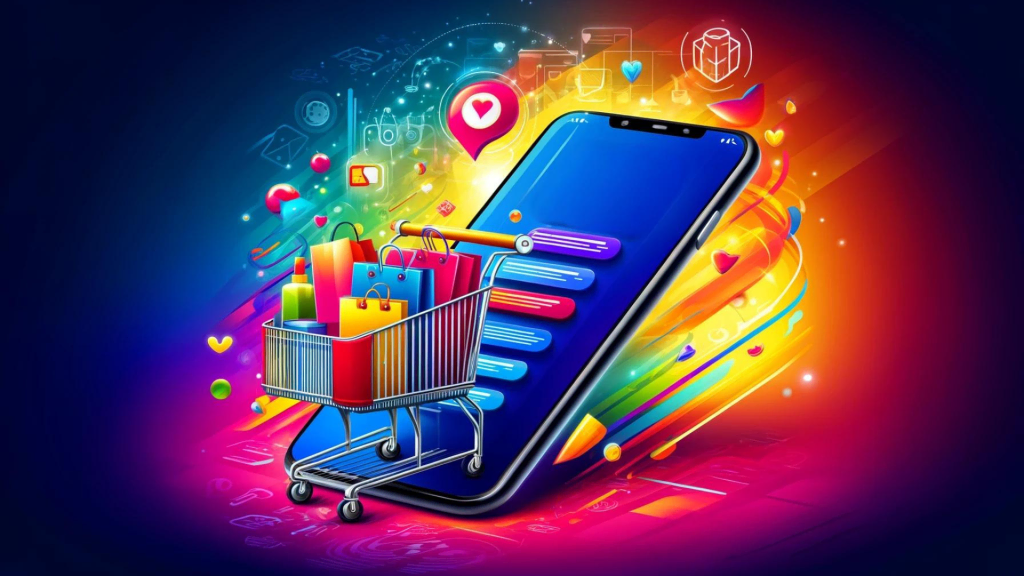Personalization Tactics In Online Shopping
Reading time: 6 minutes
Table of Contents
- Understanding the Importance of Personalization in Ecommerce
- Why Personalization Matters for Shopify and Other Ecommerce Platforms
- Leveraging Customer Data for Personalization
- Collecting and Utilizing Customer Data
- Implementing Dynamic Product Recommendations
- Dynamic Content and Personalized Offers
- Tailoring Content Based on Behavior
- Enhanced User Interfaces for a Personalized Experience
- UI Customization Tactics
- Post-Purchase Personalization for Retention and Loyalty
- Strategies for Post-Purchase Personalization
- Integrating Personalization with Ecommerce Management and Optimization
- Ongoing Personalization Strategies
- Conclusion: The Future of Personalization in Ecommerce
Personalization in online shopping has evolved from a simple enhancement to a critical strategy for success. As consumers expect increasingly tailored experiences, ecommerce businesses must implement robust personalization tactics to drive satisfaction and loyalty. Personalization also plays a crucial role in ecommerce conversion rate optimization and contributes significantly to ecommerce website optimization.
In this article, we’ll explore effective strategies for personalization that help optimize the customer journey, increase engagement, and boost conversions for online retail stores. Let’s dive into the world of ecommerce personalization and discover how these tactics can transform your business.
Understanding the Importance of Personalization in Ecommerce
In a competitive digital landscape, personalization is no longer an option but a necessity. For ecommerce sites, personalization means creating a shopping experience that caters specifically to each user, which can have a profound impact on conversion rates and customer retention.
Image Suggestion: Visual of a personalized homepage with product recommendations based on user history
Why Personalization Matters for Shopify and Other Ecommerce Platforms
Retailers on platforms like Shopify are embracing personalization to stand out. Studies have shown that customers are more likely to engage with brands that provide a personalized experience, leading to increased time spent on the site, more frequent purchases, and higher overall satisfaction. Personalization is an essential component of ecommerce conversion rate optimization because it creates a seamless experience that aligns with each shopper’s unique needs.
Leveraging Customer Data for Personalization
The foundation of personalization in ecommerce is data. Without the right data, it’s challenging to tailor the online shopping experience effectively. By gathering insights from various sources, online retail stores can achieve a high level of personalization that feels intuitive and natural to the user. One powerful way to apply this data is through email marketing tactics that adapt to customer behavior and preferences, allowing for personalized communication that boosts engagement and repeat purchases.
Image Suggestion: Graphic showing different data sources (e.g., browsing history, purchase history, preferences) feeding into an ecommerce personalization engine
Collecting and Utilizing Customer Data
Data collection begins with understanding customer preferences and behaviors. Here’s how ecommerce platforms, including Shopify, can leverage customer data:
- Browsing History: By analyzing pages viewed and products clicked, businesses can understand user interests.
- Purchase History: Past purchases reveal preferences and can be used for targeted recommendations.
- Personal Preferences: Allowing users to create profiles or wish lists can enhance personalization efforts.
Implementing Dynamic Product Recommendations
Customized product recommendations are among the most powerful tools to boost engagement, conversions, and overall customer satisfaction. By leveraging advanced algorithms, ecommerce platforms can analyze a shopper’s browsing history, purchase behavior, and product preferences to deliver highly relevant suggestions in real-time.
These data-driven insights are especially valuable when enhancing ecommerce with personalization strategies for success, as they guide users toward products they’re more likely to purchase. This approach not only improves the shopping experience but also drives higher order values and encourages repeat visits—making it a cornerstone of effective ecommerce website optimization.
Strategic Placement of Recommendations
Product recommendations should be visible at key points in the shopping journey:
- Homepage: Display recommended products immediately as customers visit the site.
- Product Pages: Show complementary items to encourage additional purchases.
- Checkout Page: Offer related products as an upsell opportunity.
Image Suggestion: An example of personalized product recommendations displayed on a homepage, product page, and checkout page
Dynamic Content and Personalized Offers
Personalization goes beyond product recommendations. Dynamic content allows the ecommerce site to adjust the displayed content based on the individual user’s past interactions. For example, if a customer frequently buys sports equipment, the homepage can highlight new arrivals or discounts in that category. This tactic is not only a great tool for ecommerce management but also essential for creating a seamless shopping journey.
Tailoring Content Based on Behavior
Personalized content might include:
- Homepage Banners: Show promotions or collections based on the user’s browsing history.
- Email Marketing: Send personalized product updates or discounts.
- Push Notifications: Remind users of abandoned carts or relevant new products.
By presenting dynamic, tailored content, online retail stores make customers feel like the brand truly understands their needs and interests.
Image Suggestion: A dynamic homepage banner displaying products and offers aligned with the customer’s browsing history
Enhanced User Interfaces for a Personalized Experience
User interface (UI) design can be personalized to improve user experience across different devices and browsing behaviors. Customizing the site layout based on user interactions and preferences leads to better engagement and retention.
UI Customization Tactics
Here are a few UI personalization tactics that contribute to ecommerce optimization:
- Responsive Design: Ensure the site layout is device-specific for optimal browsing on desktop, tablet, or mobile.
- Navigation Styles: Adjust navigation based on customer preferences or frequently accessed sections.
- Color and Layout Variations: Offer different themes or layouts that users can select for a more personalized experience.
Image Suggestion: A mobile-responsive UI layout that adapts to the customer’s browsing device
Personalizing the UI is crucial for Shopify stores and other platforms aiming to enhance user satisfaction and streamline the shopping journey.
Post-Purchase Personalization for Retention and Loyalty
Personalization doesn’t stop at the purchase. Post-purchase experiences are vital for fostering customer loyalty and driving repeat purchases. Effective post-purchase personalization strategies can be a valuable asset for ecommerce management, as they help retain existing customers and encourage them to return to the store.
Strategies for Post-Purchase Personalization
- Order Follow-ups: Send personalized messages asking for feedback on the purchase.
- Product Recommendations: Suggest complementary items based on previous purchases.
- Loyalty Programs: Offer points or discounts to encourage future shopping.
Personalized post-purchase engagement shows customers that the brand values their business and aims to support their needs beyond the initial sale. This approach is invaluable for boosting retention rates and ensuring long-term success for Shopify stores and other online retail stores.
Image Suggestion: Example of a personalized email with product recommendations and a loyalty reward offer
Integrating Personalization with Ecommerce Management and Optimization
For effective personalization, ecommerce businesses must align their strategies with robust ecommerce management and ecommerce website optimization practices. This alignment involves consistently analyzing and adjusting personalization tactics to ensure they meet customer needs and achieve business goals.
Ongoing Personalization Strategies
Personalization should be a continuous process that evolves with customer expectations and behavior trends. Here are ways to maintain an optimized, personalized experience:
- A/B Testing: Regularly test personalized elements (e.g., banners, product recommendations) to optimize engagement.
- Customer Feedback: Use reviews and feedback to enhance personalization strategies.
- Analytics Tools: Employ tools that monitor and analyze user behavior, allowing for constant improvement in personalization efforts.
Image Suggestion: Dashboard showing analytics data related to personalized content engagement and conversion rates
By adopting a strategic approach to ecommerce conversion rate optimization, businesses can maximize the value of personalization, creating a unique and compelling experience for every visitor.
Conclusion: The Future of Personalization in Ecommerce
The evolution of personalization in ecommerce is set to continue as technology advances. Platforms like Shopify and other major ecommerce players are investing in AI and machine learning to enhance their personalization capabilities. These innovations will likely drive more sophisticated personalization tactics that feel increasingly natural and intuitive to users.
For ecommerce businesses looking to thrive in a competitive market, personalization is a powerful tool that can improve both customer experience and business outcomes. By implementing the tactics discussed in this article, you can create a shopping experience that is truly unique for every customer, setting your brand apart in a crowded digital landscape. Discover what Owltek Solutions offers in the realm of eCommerce and see how we can elevate your online business to new heights!

**This post contains affiliate links, meaning I may earn a small commission if you make a purchase through one of them. Rest assured, I only recommend products I truly love. Your support helps keep my creative business thriving — thank you!**
